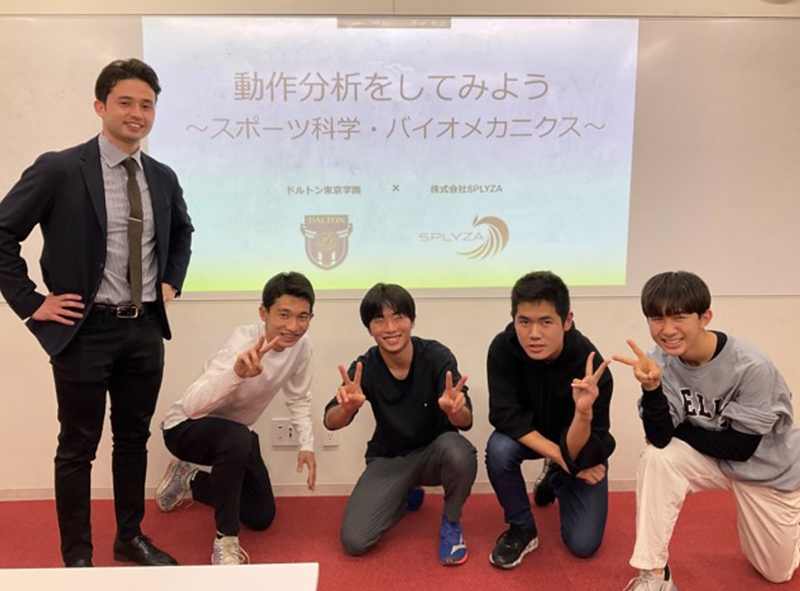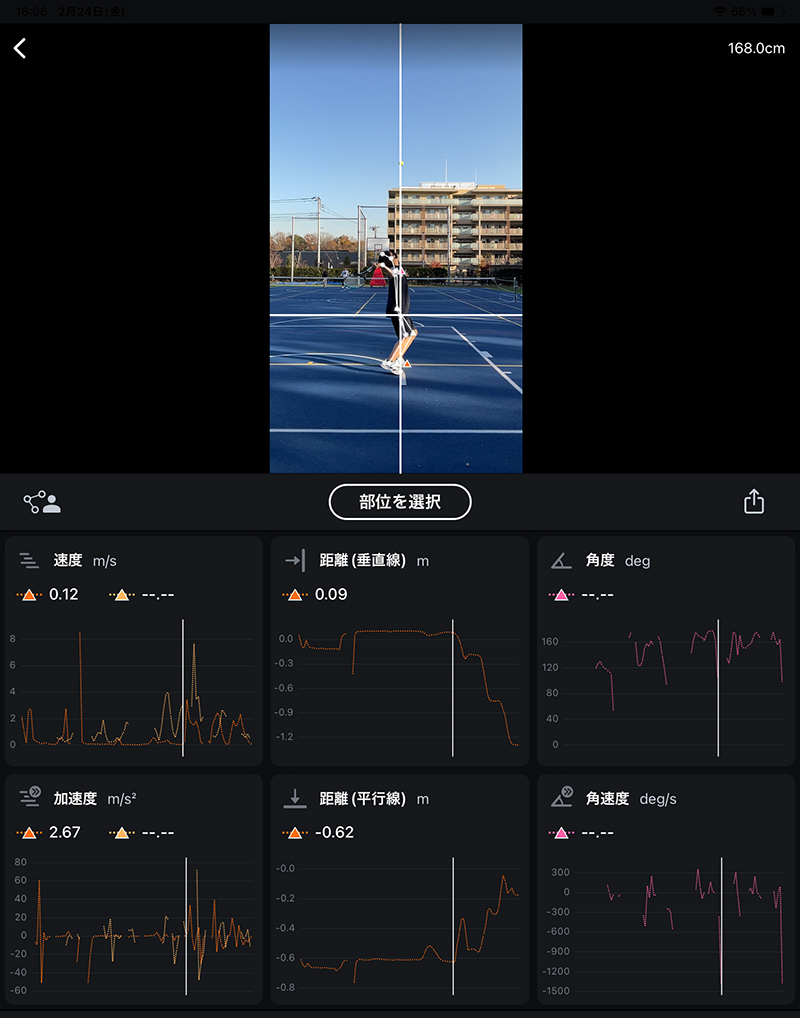Implementation record of SPLYZA Motion in classes. :
Dalton Tokyo Junior & Senior High School

Dalton Tokyo Junior & Senior High School
ー What inspired
you to use SPLYZA Motion?
Mr. Kobayashi :
As our school promotes the use of ICT, we had been considering utilizing it in sports as well. When I
attended an academic conference and learned about SPLYZA Motion, I was impressed by how easily it could be
implemented using an iPad. I decided to incorporate it into our classes immediately.
ー What kind of inquiry-based lessons did you conduct before
using SPLYZA Motion?
Mr. Kobayashi :
We held lessons where students were tasked with "inventing their own sports." One of the sports created
during these classes was "HB," a hybrid sport combining elements of handball and basketball.
ー What are your thoughts on the combination of sports and
ICT, Mr. Kobayashi?
Mr. Kobayashi :
I believe that by quantifying abstract aspects like “you should run this way” or “you should move your arms
this way” and logically explaining them, it becomes easier for students to visualize and understand.
ー Have you noticed any changes after incorporating ICT into
sports?
Mr. Kobayashi :
I think students have learned to view themselves from a broader perspective. ICT allows for
self-exploration, regardless of skill level—whether it's for students who struggle with sports or those who
want to improve. In class, we primarily used SPLYZA Motion to analyze students' movements, and some
discovered new insights while others pursued further refinement. I believe it was a meaningful experience
for the students.
ー What challenges have you encountered when incorporating it
into classes?
Mr. Kobayashi :
Time was a challenge, as it was a new initiative and we had limited time to work with. I believe how we
structure the class and manage time will be areas to improve moving forward.
ー What does “exploring sports” mean to you?
Mr. Kobayashi :
I think the key points of exploration in sports are "learning" and "enjoying" sports. Before addressing
whether students are skilled or unskilled, incorporating ICT to focus on the "enjoyment of sports" can help
break down barriers.
ー What are your expectations moving forward?
Mr. Kobayashi :
I'm looking forward to SPLYZA Motion continuing to evolve and its features expanding. As for classes,
there's a possibility that students with no prior sports experience will select these classes. I’d like to
develop a curriculum that addresses not only the sports aspect but also movement, physical health, and
fitness, using these tools for both sports and health education.

ー Next, we'd
like to ask the students some questions. Could you share why you chose the "Sports Science and
Biomechanics" class?
Yokomori (Student) :
I like sports and thought the subject seemed interesting, so I chose it.
Tomishima (Student) :
I play tennis and went through a slump about six months ago. When I saw the words "motion analysis" in the
lab description, I was intrigued. While I wanted to improve myself, I also thought it seemed fun, so I
decided to take the class.
Kakitsu (Student) :
I already knew the term "biomechanics" and was interested in it. Since track and field is my specialty, I
thought, "This is amazing!" and chose it without hesitation.
Kushitani (Student) :
I love sports and participate in track and field. My coach often pointed out issues with my form, so I
wanted to analyze my own form, which is why I took this class.
ー What did you think about using SPLYZA Motion?
Yokomori (Student) :
It was easy to understand and view movements since they were displayed as stick figures.
Tomishima (Student) :
It clearly showed things like the knees and center of gravity, which was helpful for improving my form.
Kakitsu (Student) :
The analysis could be done in a short time, and since the movements were displayed as stick figures, I could
closely examine my own movements in detail. There were some poses where the stick figure didn't function
properly because of overlapping motions, but overall, I think it's a great app.
Kushitani (Student) :
I liked that it allows full-body analysis without markers and lets you focus on specific areas of interest
while performing motion analysis.
ー Was there a difference between watching normal footage and
viewing it with motion analysis?
Yokomori (Student) :
I think the strength of motion analysis lies in being able to quantify your movements. With normal footage,
you can see the movements, but it's hard to understand the precise differences in how your body moves. Being
able to quantify it allows you to broaden your perspective, which I found very beneficial.
Tomishima (Student) :
In the past, I couldn't clearly see the parts I wanted to focus on. However, with the stick figure
representation showing details like the elbows or head position, it's now possible to easily confirm even
areas like the back. I found that incredibly useful.

ー How did you
review your performance before using SPLYZA Motion?
Kushitani (Student) :
When I participated in competitions, I would have the coach watch the competition footage and give me
advice.
Kakitsu (Student) :
I love track and field so much that, whenever I had free time, I would constantly watch related videos at
home. After competing in a meet, I would immediately review the footage to reflect on my performance that
day.
Tomishima (Student) :
Since I was part of a school program, even if I filmed videos, I couldn't show them to my coach right away.
So, I would watch the footage myself and compare my movements with those of skilled athletes. Looking back
now, I realize that environmental limitations might have prevented me from doing much effective reflection
at the time.
ー Lastly, what does it mean to explore sports?
Tomishima (Student) :
Previously, I could only do things with the guidance of coaches, but now, with the app, I can analyze my
performance independently. By seriously engaging in analysis, I've experienced a sense of tension that I
hadn't felt before, and my perspective on sports has completely changed. In the past, I tried to fix
everything randomly, but now I can focus on specific areas, such as my knees, which has broadened the scope
for improvement.
Kakitsu (Student) :
Previously, I used to practice and train for inter-high competitions based on my coach's ideas, but through
exploration, I've gained knowledge and learned to develop training methods that suit my own condition. By
forming my own thoughts and opinions, I've become less reliant on others and more capable of selectively
adopting others' ideas. I believe this ability to think for myself has contributed significantly to my
growth.